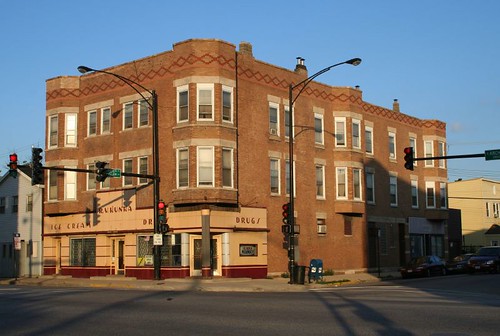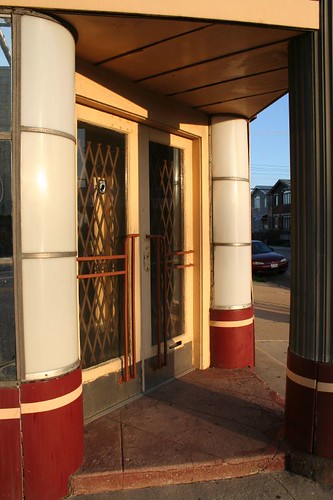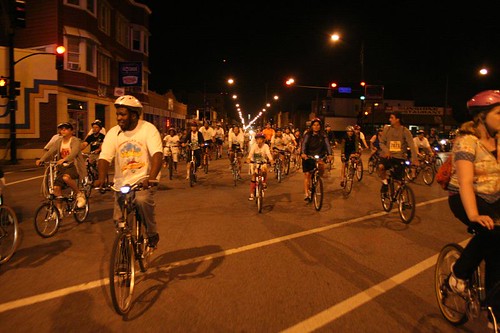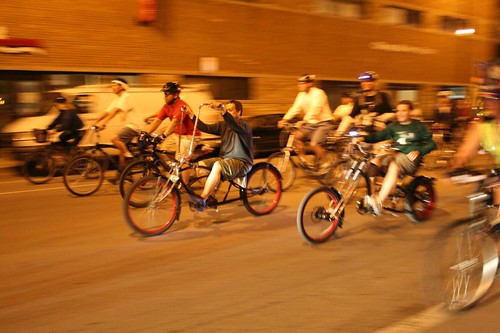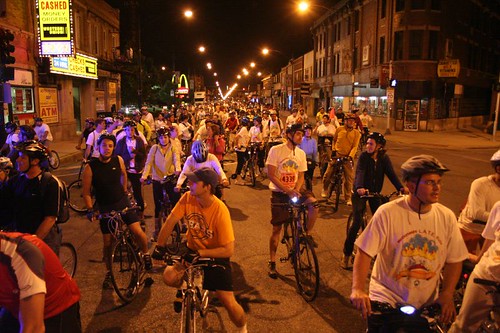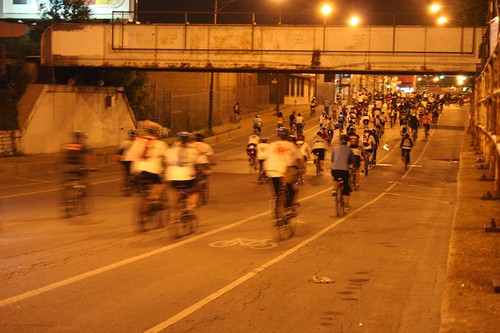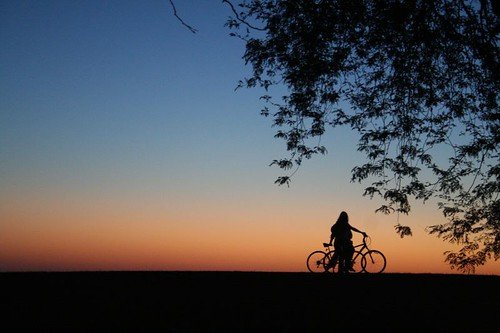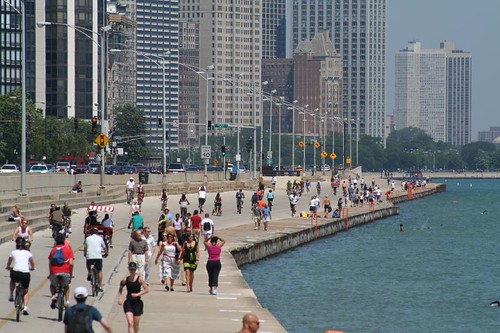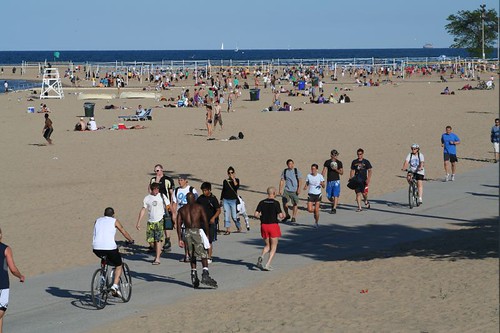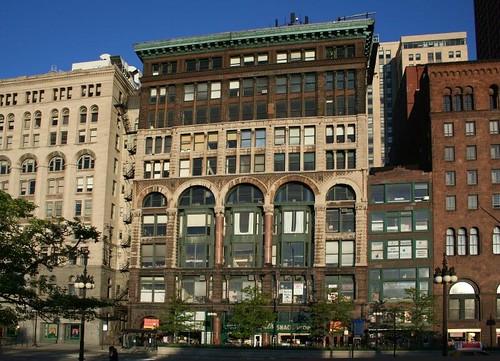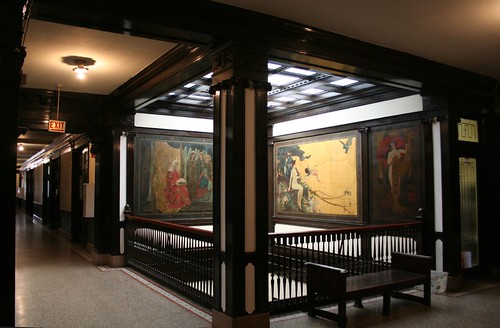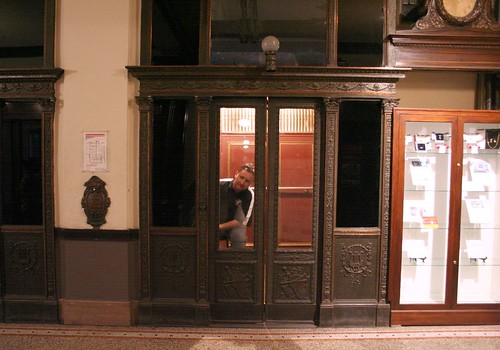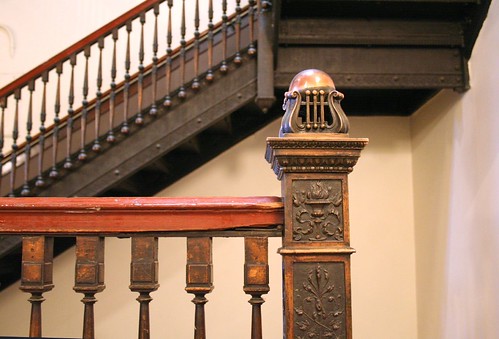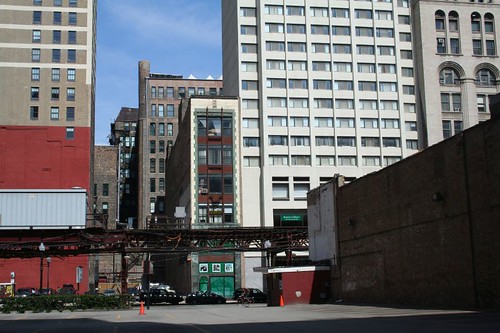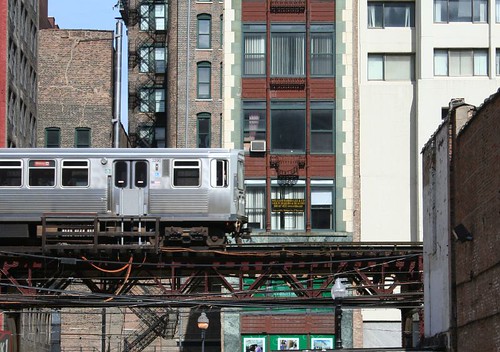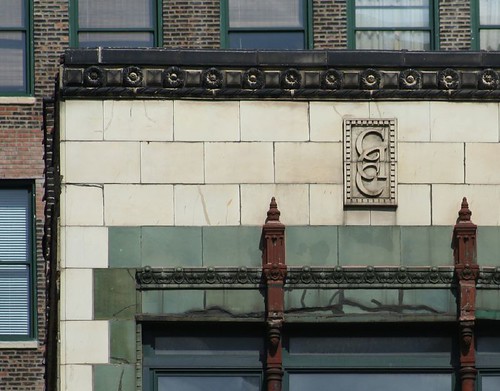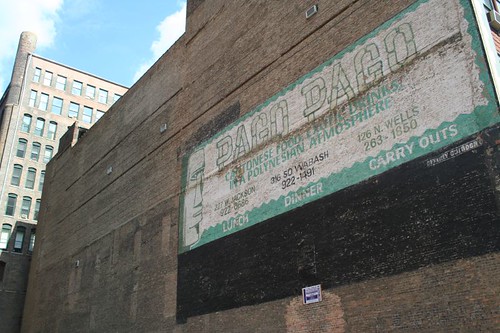Years ago, I made one of my first trips to Chicago to pay a visit to Frank Lloyd Wright's home and studio out in Oak Park. With that mission accomplished, my friend and I decided to see if we could make it down to the Robie House on the south side as well. I was driving, and elected to take a long, leisurely route through the city streets rather than jumping on a highway. It was on this trip that I discovered W. 18th Street.
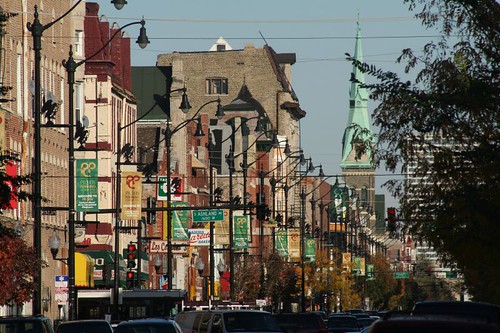
I was sufficiently blown away by its endless ranks of 3- and 4-story commercial buildings, all seeming to date from the post-Fire years, that I made another trip down to Chicago just a week later, for the express purpose of paying a lengthy visit to this remarkable street.
Years later, the Pilsen neighborhood usually figures into my plans at least every few months. As a predominantly Mexican neighborhood, it's home to scads of restaurants, and the Mexican Fine Arts Museum.

It's also just a comfortable and friendly place to wander and photograph. The street is rich with details - signs, graffiti, ad hoc renovations, store displays, half-completed projects, murals, rusting fire escapes, and of course block after block of ornate vintage architecture.
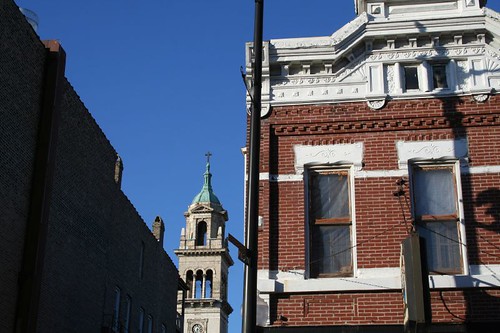

In light of this commercially and aesthetically rich strip, I was surprised to find not one but
two additional commercial streets nearby, both equal to W. 18th Street in architecture and culture.
The first one I encountered only this weekend. I was a bit tired and hungry, but the major buildings on this stretch of Cermak Road were just too amazing to pass up. I stopped the car and walked for an hour or so. The strip is west and a bit south from 18th Street.

The prize find, and the building that compelled me to stop, was the old Marshall Square Theater, now called Apollo's 2000.
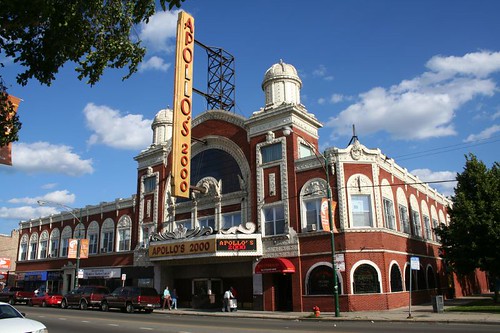
The building was, after a fashion, familiar to me from a striking photograph in Camilo Jose Vergara's wonderful
Unexpected Chicagoland, but not till I was standing in front of it did I have the "ah hah!" moment of recognition, when I saw the remorselessly vandalized goddess figure on the front facade, her face obliterated by a box beam ramming through it.
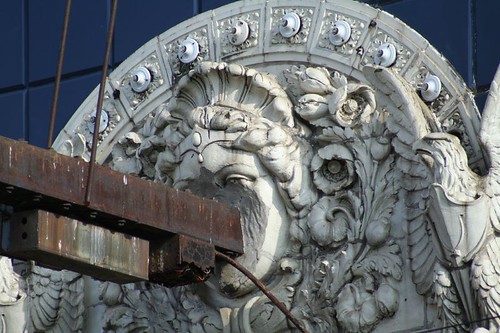
A second theater, last operated as the West Theatre, stands a few blocks east. It's not as ornate, but still lovely.
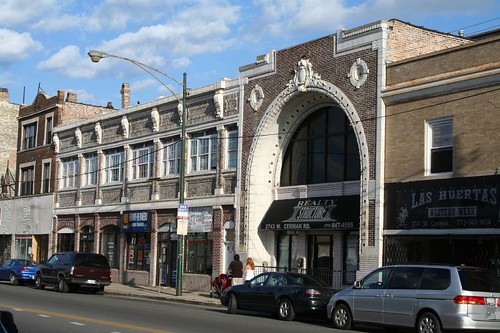
The neighborhood's official names include South Lawndale and Little Village; demographically speaking, today it's a westward extension of Pilsen, with a heavily Mexican-American population.
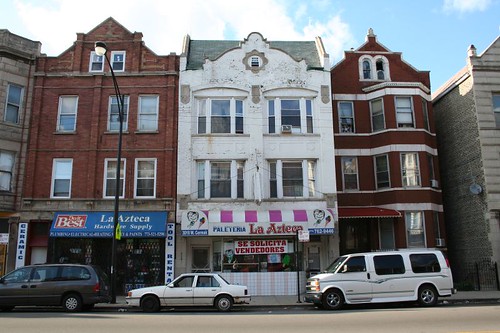
Further west and south again from Cermak, W. 26th Street forms the core of the Little Village neighborhood. Founded and first settled by Eastern European immigrants, the area's current name originated in the 1970s from its more recent Mexican immigrant population.
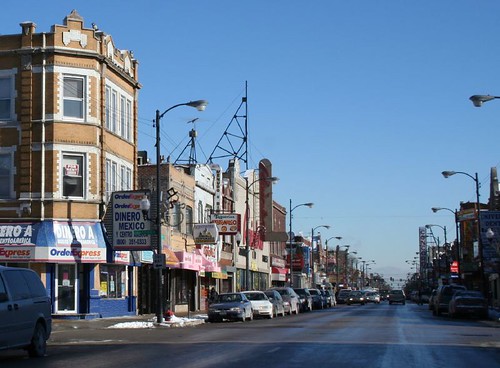

The street's centerpiece is the former
Atlantic Theater building, now converted to mundane commercial use.
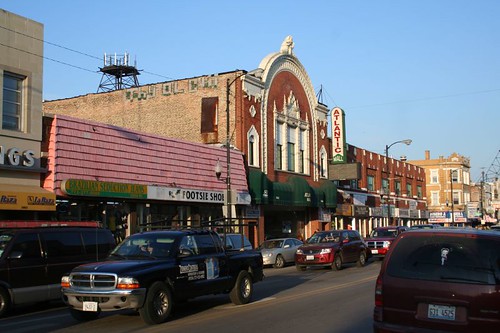
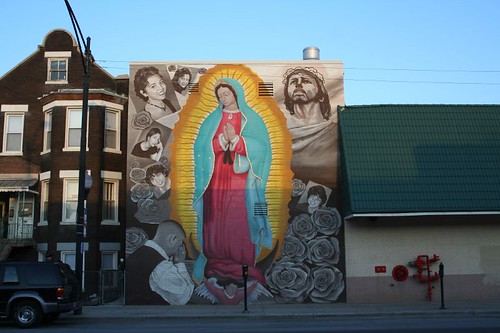
Any one of these streets would be a marvel by itself; finding them all in such close conjunction is simply amazing.
